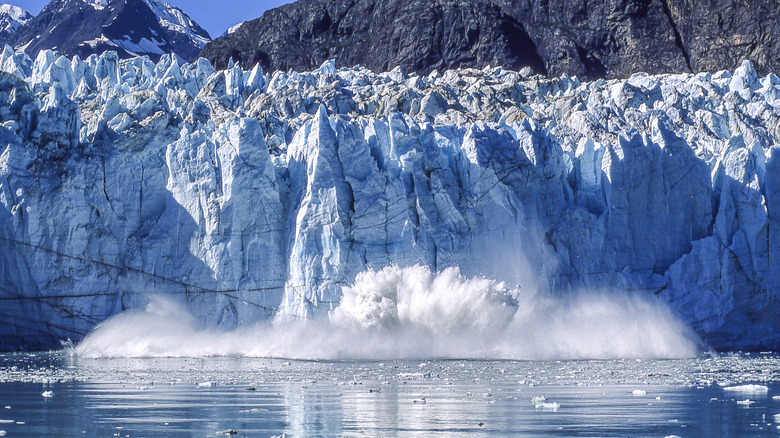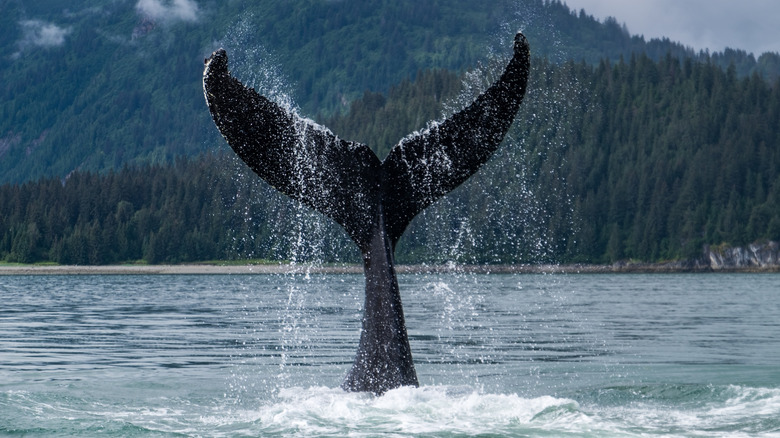In pristine southeast Alaska, Glacier Bay National Park is an incredible place of snow-capped mountains, serene forests, misty bays and fjords, and some of the most spectacular glaciers. Spanning over 3.3 million acres, Glacier Bay sits west of Juneau and is a bona fide wilderness, accessible only by plane or boat. The park’s geological and cultural history is as fascinating as its landscapes. Its glaciers have rapidly retreated since the Little Ice Age of the mid-1700s, making it an important site for studying the environmental effects of the changing climate. The area has also been home to the Huna Tlingit people for centuries. Those interested in learning more about the rich culture and traditions of these Indigenous people can visit the Xunaa Shuká Hít, or Huna Ancestors’ House, while visiting the park.
Nature takes a multitude of glorious forms throughout the Glacier Bay, but its crown jewels are the magnificent glaciers. Most of the park’s glaciers — of which there are more than 1,000 – are terrestrial glaciers located deep in the mountains, but some are tidewater glaciers that are visible from the bay. Cruises are a convenient and comfortable way to see these awe-inspiring tidewater glaciers. But adventurers who want to get up close and personal with them should consider a once-in-a-lifetime kayaking expedition.
Kayaking in Glacier Bay

Kayaking in Glacier Bay is an unforgettable experience as well as a deeper immersion into the world of glaciers. In a kayak, you can paddle right past the ice giants to more closely examine their icy convolutions, curious striations, and strange blue light. If your timing is right, you may also get to experience the unbelievable thrill of a glacier calving, when large chunks of ice break off a glacier’s face and tumble into the water. Seeing this event from a safe distance in a kayak — while hearing the thunderous roar and feeling the reverberations in the water — is totally different than viewing it from the confines of a cruise ship.
Kayaking trips ranging from day excursions to multi-day adventures are available in the park. Guided trips are recommended for those with minimal kayaking experience. Professional guides provide training on kayaking safely and share information on the park’s geology and ecosystems. For more seasoned kayakers, self-guided trips are also an option. However, these excursions require detailed planning, careful monitoring of the weather, and a solid understanding of tide tables. Those embarking on self-guided multi-day trips should also be familiar with the rules and regulations related to camping in the Alaskan backcountry, such as using bear-resistant canisters for storing food.
Other amazing sights in Glacier Bay

While glaciers are its main attraction, the park has many other natural wonders to explore — even better if you’re in a kayak. Imagine watching gigantic humpback whales breach, spout, fin slap, and flash their tails from your kayak’s quiet and private viewing space. This is an experience you can have in Glacier Bay, which is a sanctuary for the humpback whales that feed in its waters during the summer months. Thanks to the park’s protections, which are among the strongest on the planet, the number of humpback whales in the bay is actually rising.
But whales are not the only amazing animals you’ll see during your Glacier Bay kayaking expedition. You’re also likely to see sea otters and Steller sea lions in the water or near the shore. Averting your gaze to the land, you may catch glimpses of black and brown bears, moose, mountain goats, wolves and perhaps even an elusive lynx. The park is also home to more than 280 bird species, including bald eagles, murrelets, cormorants, puffins, hummingbirds, shearwaters, petrels, and oystercatchers. Bird lovers should definitely steer their crafts toward the Beardslee islands, which are a haven for seabirds and waterfowl. In this group of islands, which are also within the park’s boundaries but inaccessible by larger vessels due to shallow waters, kayakers can discover beaches and coves that are so quiet and secluded that they feel like nature at its absolute purest.

